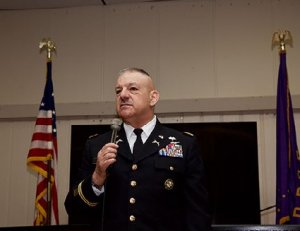Richard A. Vargus
Dr. (LTC) Vargus served in the United States Marine Corps and United States Army for almost forty years. Initially retiring in 1995.
Following retirement, he began an extended career in law enforcement, assuming positions in federal and local law enforcement. Serving with the newly established New York FBI Joint Terrorist Task Force following the 911 attack.
In January 2005 Colonel Vargus returned to active service. Deploying to Iraq Commanding the Iraqi National Police Academy. Following this assignment, he assumed duties as the Chief of Law Enforcement for US Central Command Joint Security Office. Directing mission and force flow for theater joint military police, and contract security forces. Directing command authority for the 2000 military (US – Coalition) and contract working dogs, Customs Operations, and Protective Service Detail. Colonel Vargus frequently deployed overseas to execute command oversight.
Colonel Vargus returned to retired status in October 2012. Assuming the position as the Army Military Working Dog Program Manager. In 2018 he assumed the role as the Department of Defense Canine Program Manager. In both positions he established the global canine strategic platform, built inter-agency partnerships and provided policy for the DoD canine enterprise. As well as providing military canines supporting multiple US Secret Service worldwide dignitary protection for the President, Vice President and Secretary of State, and National Security Special Events.
He Vargus holds a doctorate in Public Administration and is a graduate of the Army Command and General Staff and Air War College. His awards include the Bronze star and Defense Meritorious Service Medal. Dr. Vargus is the author of Warrior Dogs…Getting to the Battlefield.
He and his wife Lieutenant Colonel Norma Vargus (ret) reside in New Windsor New York.
Class: Canine Decontamination
How will we protect our working dogs if they are exposed to chemical, biological, or radiological (CBR)l contaminants? Today that question looms with each first responder, and military handler across the globe. Decontamination and protective equipment for working dogs is minimal to non-existent. This presentation will look at canine threats, current decontamination techniques and future initiatives to develop canine protective equipment.

